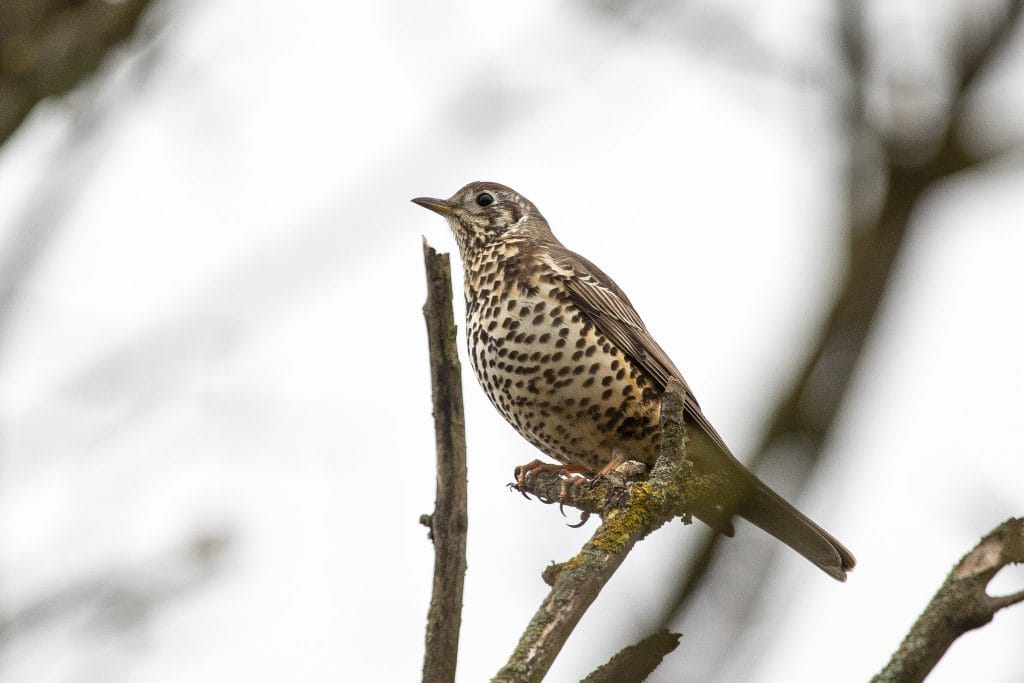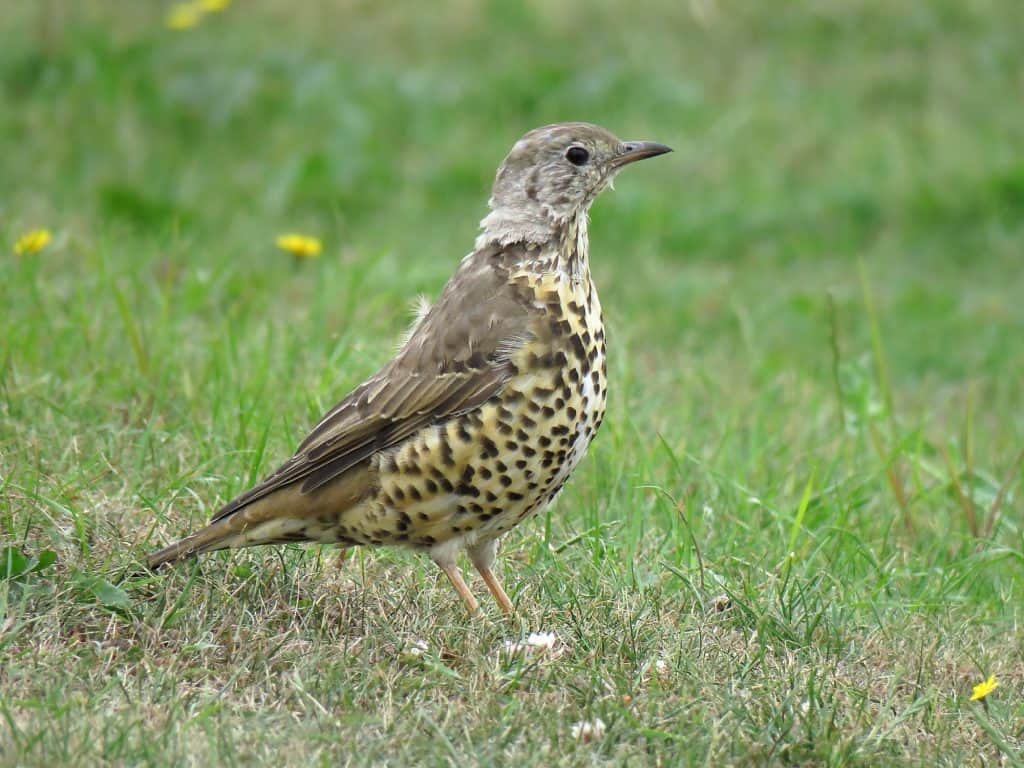Introducing my first Wingham Wildlife Park bird identification blog where I’d love to point out a species that you can try and spot at the park, depending on the time of year of course. And if you’re a birder, like me you’ll be busy on New Year’s Day trying to build up your bird list for 2022! A species that’s caught my attention over the past few weeks is the Mistle Thrush (Turdus viscivorus). Wingham Wildlife Park is a great place to try and spot one at the moment.
Identification

Mistle Thrushes are one of our earliest breeders here in the UK and they have certainly been busy setting up territory here at the Park already, in fact I’ve been hearing them singing for a few weeks now! If you pay a visit early on in the day you might be lucky enough to hear their mournful song. I think it’s a lovely thing to hear, especially as a lot of the other songbirds have only just started to add their songs to the mix. If you’ve not heard it before, you can get familiar with their song by listening to it HERE. I always think they sound like they almost forget their song, remember it, then start singing again.
Follow the sound and you’ll likely see the Mistle Thrush perched at the top of one of the trees around the park. I’ve been finding them quite easy to spot at the moment because there are still no leaves on the trees! You’re looking for a large bird which is quite pale with black spotting. They are the largest Thrush species in the UK and are noticeably larger than Song Thrushes with a longer tail. If you see one up close the spots on their belly and flanks are very round in appearance.

As well as the fluty song, they also have an unmistakeable rattling call. They can get quite aggressive if another Thrush, or predator enters their territory so it’s always quite exciting to hear this call when walking around the park. Listen to this machine-gun like call HERE. Mistle Thrushes are famous for defending their food sources from other birds. If you do see it in flight look out for the long wings and tail which have whitish edges.
It’s fantastic to see this Red-listed species doing so well at the park. I’m certain at least one, maybe two pairs breed here each year. And I was very lucky on a couple of occasions to find their nest and add the information to the British Trust for Ornithology’s nest record scheme. They usually weave a nest of grass, moss and roots in the fork of a tree, binding it together with mud leaves and rotten wood. They can lay eggs as early as the end of February and can have up to three broods of chicks each year right through to the end of June.
Fun fact
The old name for Mistle Thrush was a Stormcock because they often sing in poor weather, but Mistle Thrushes actually get their name from their love of mistletoe berries. Their scientific name literally translates as “devourer of mistletoe”.
The Mistle Thrush actually helps spread the mistletoe’s seeds. Mistletoe is a semi-parasitic plant which attaches to a host tree, extracting water and nutrients. The mistletoe berry is very sticky and when the Mistle Thrush eats it, it passes through the digestive system and comes out just as sticky! Perfect for attaching to a new host tree. As well as berries, Mistle Thrushes will also eat seeds, fruit, insects and worms.
Confusion species
When I first started birding I didn’t even realise there was more than one Thrush to see in the UK when in fact there are six, including the familiar Blackbird. Other members of the family to try and see throughout the year are the Song Thrush, Fieldfare, Redwing, the rarer Ring Ouzel and of course the Mistle Thrush.
The most likely bird to get confused with a Mistle Thrush is a Song Thrush. However, apart from the size difference thankfully the markings on the Song Thrush are quite different as well. They have much warmer brown tones and the spots on the belly and flanks are more arrow-shaped and streaky than the distinctive round spots of the Mistle Thrush.

Song Thrush by Steve Reynaert 
Mistle Thrush by Nick Smith
You can also tell their songs apart as the Song Thrush has a habit of repeating its favourite phrases three or four times. Listen to their various songs HERE.
I hope you enjoyed reading about these fantastic Thrushes, and I hope you get to see one on your next trip to the park! Best visit before February though, as they get very sneaky and quiet once the female is on eggs!
A huge thank you to my friends Nick and Steve for letting me use their photos in my blog this week.
Happy birding!


